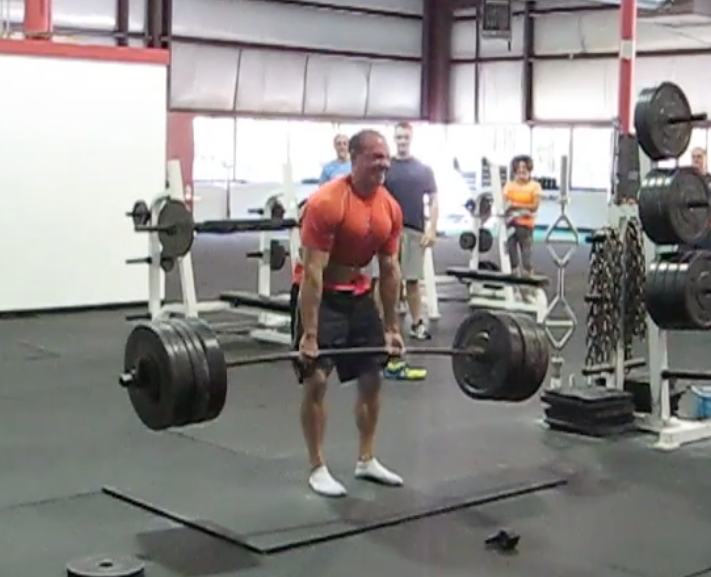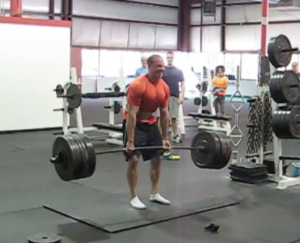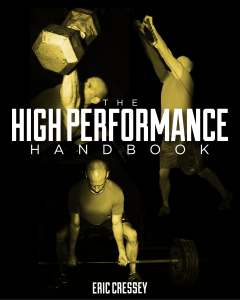
5 Spine-Sparing Strength and Conditioning Program Strategies
In his book, Back Mechanic, Dr. Stuart McGill frequently uses the term “spine hygiene” to describe how individuals position themselves during various everyday and athletic tasks to manage their back pain. Most of the strategies speak to the positional side of things, but I thought it might be worthwhile to take a look at some strength and conditioning program strategies you can employ to keep the spine healthy over the long haul.
1. Don’t pick up heavy dumbbells.
The stronger you get, the bigger a pain it is to pick up and position dumbbells, whether it’s for rows, presses, or single-leg work. Things are even harder when the heaviest dumbbells are positioned on the lowest tiers of the dumbbell rack. We’ve been brainwashed for years that dumbbells are more spine-friendly than barbells, but this simply isn’t always true. Being able to unrack a weight from chest height and not having to swing it into position can be invaluable once you’re developed an appreciable level of strength. I’m not saying not to use heavy dumbbells, but rather to be very careful with this approach if you’re someone who has dealt with low back pain.
2. Cycle in heavy bilateral loading.
Make no mistake about it: a barbell will allow you to move the most weight in your program on the overwhelming majority of exercises. Unfortunately, this also means that the compressive and shear forces on your spine will generally be highest with barbell exercises. That doesn’t mean that you need to eliminate them, but rather that you need to cycle them out periodically to give you a little break. At the peak of my powerlifting career, I’d always stay away from squats, deadlifts, and good mornings for the first 10-14 days after a meet. It was all lower intensity work, anyway, so plenty of single-leg work and glute-ham raises was a perfect fit.

3. If you are going to do both in the same session, squat before you deadlift.
There are many theories as to why deadlifting is so much more exhausting both systemically and locally, but regardless of the one to which you subscribe, you’ll surely recognize that heavy pulling before squatting is a recipe for a cranky back. After all, there is a reason you always squat first and deadlift last in every powerlifting. A few of my favorite approaches in terms of sequencing are:
a. Squat heavy, deadlift for reps
b. Squat heavy, deadlift for speed
c. Squat for speed, deadlift heavy
d. Squat for speed, deadlift for reps
Occasionally, you can dabble in some speed deadlifts before you squat, but once you’ve reached a solid level of strength, I think you’ll find that it still just doesn’t work out all that well.
4. Don’t train in a fatigued state if you don’t move well.
Experienced lifters with great core control can usually get away with training through fatigue as long as the training loads aren’t outrageous. Interestingly, though, if you look at the typical recreational runner with back pain, it usually starts after they’ve already been running for a while. Fatigue changes the game, as they start to substitute lumbar extension (low back movement) for hip extension.
This doesn’t just underscore the importance of gradual return to running progressions; rather, it reminds us that those with a history of low back pain need to spend a lot of time training with perfect technique in non-fatigued states. As McGill has discussed, they’re better off doing multiple sets of shorter prone and side bridges than they are trying to hold one set for 60 seconds.
Over time, these good positions because second nature and accepted as the norm “subconscious awareness.” Every second the individual spends in a bad position, though – either because of poor positional awareness or an inability to overcome fatigue – is a step in the wrong direction.
5. Go to split-stance.
Just as single-leg lower body work can be much more spine friendly than bilateral work, simply going to a split-stance on other exercises can be helpful for minimizing unwanted spine movement, too. As an example, we always teach our wall slide variations with a split-stance, and you’ll also see this approach integrated with rowing and landmine press technique, too.

Wrap-up
These are obviously only a few of seemingly countless ways to keep your lower back healthy in a strength and conditioning program. If you’re looking for more ideas on how to structure a comprehensive program, I’d encourage to check out my flagship resource, The High Performance Handbook, at www.HighPerformanceHandbook.com.




